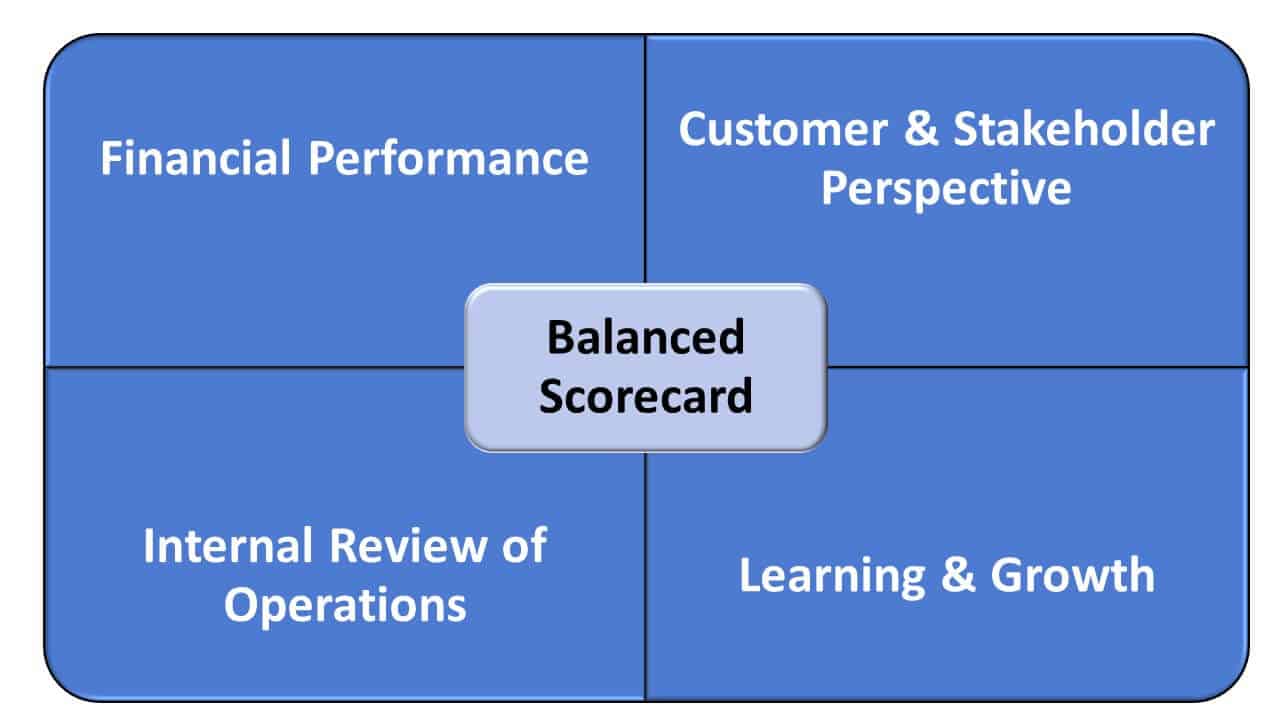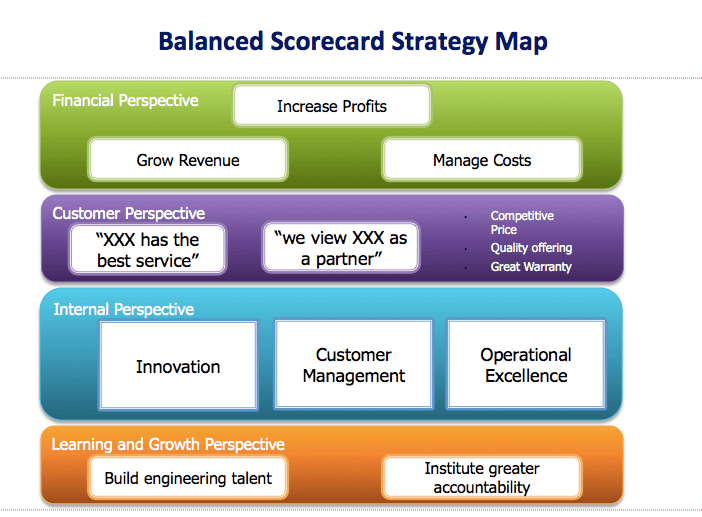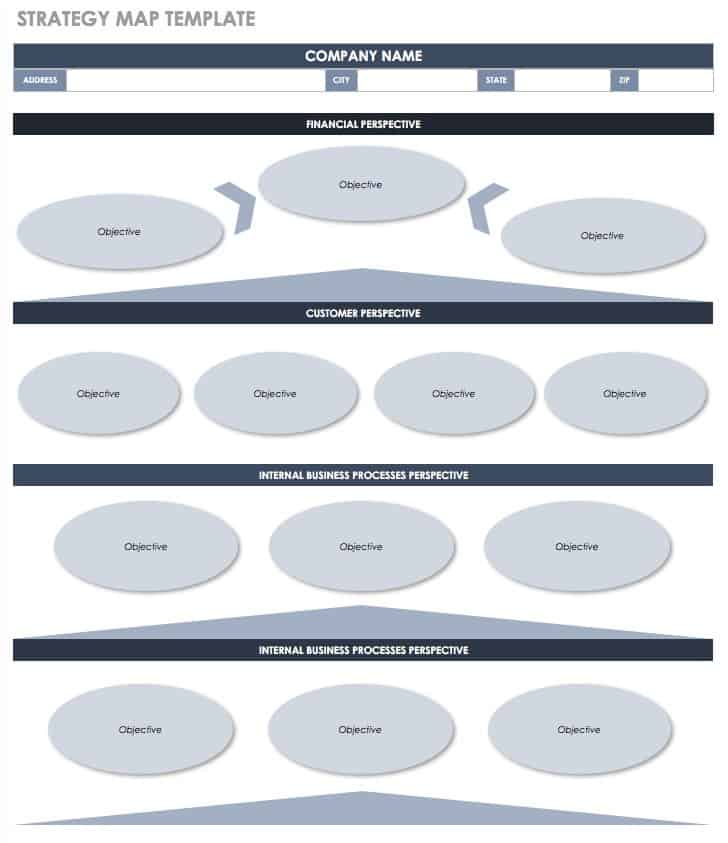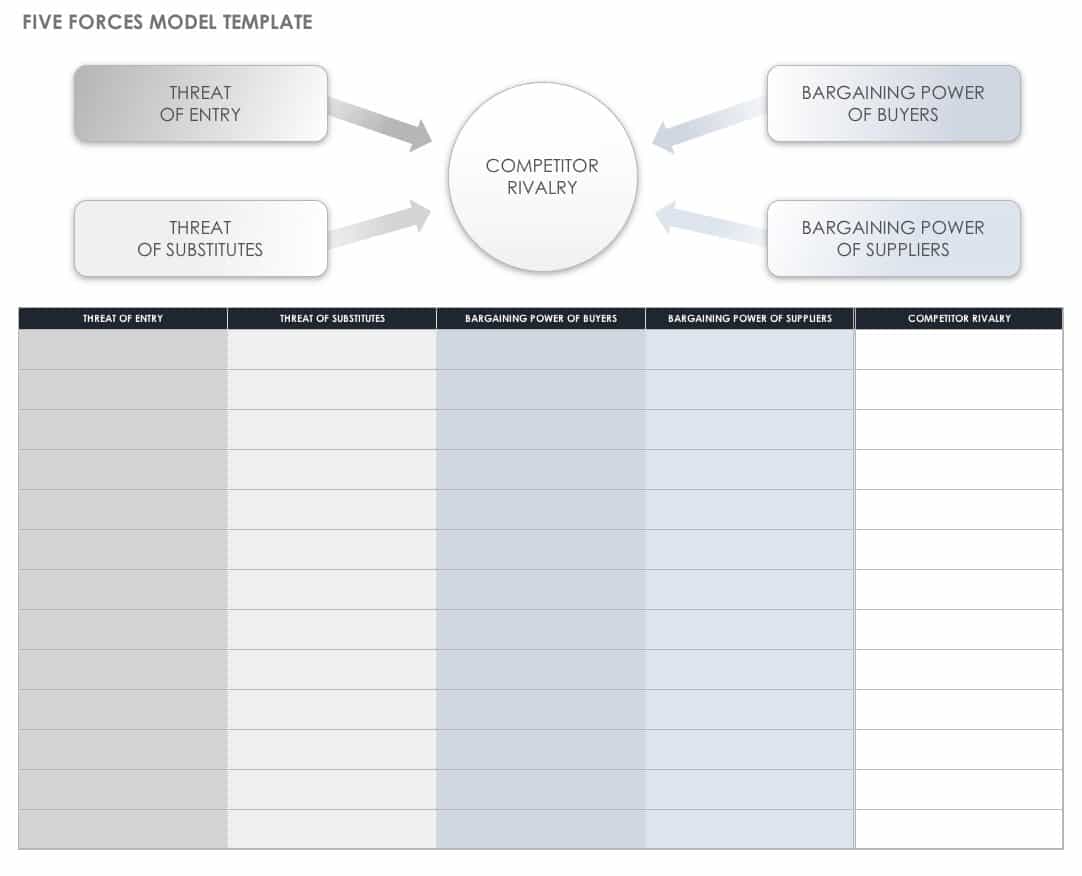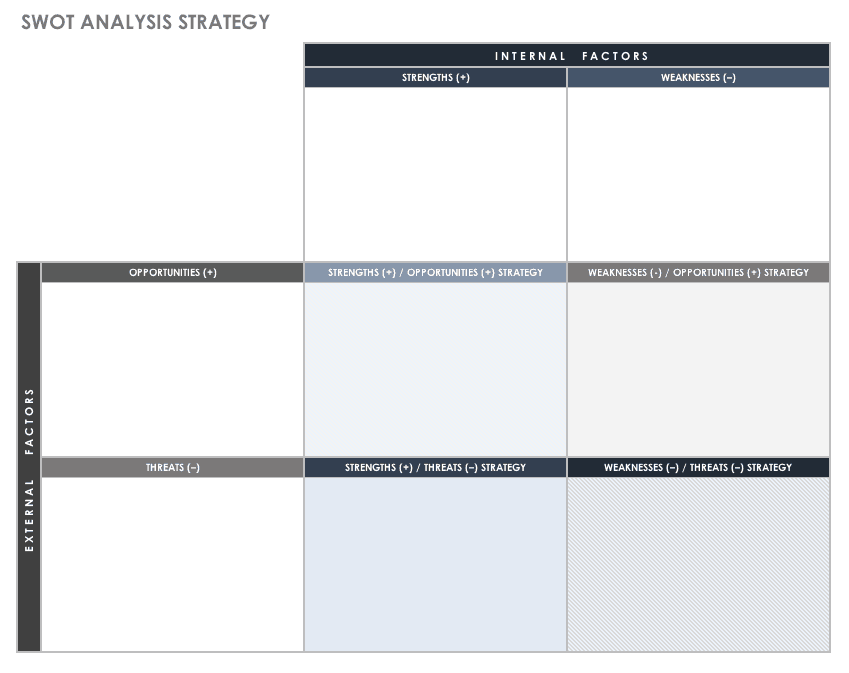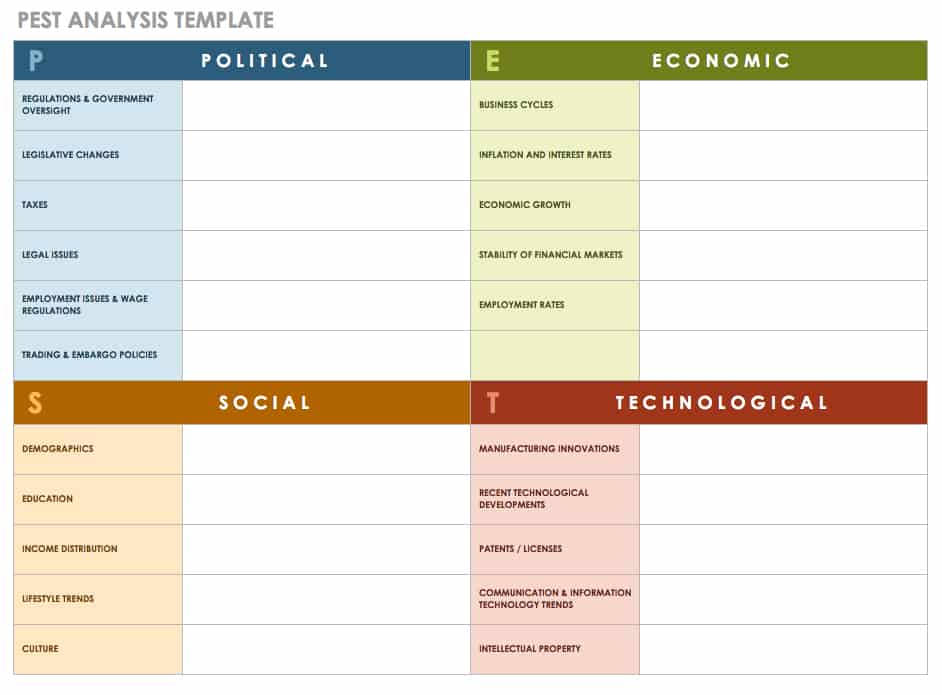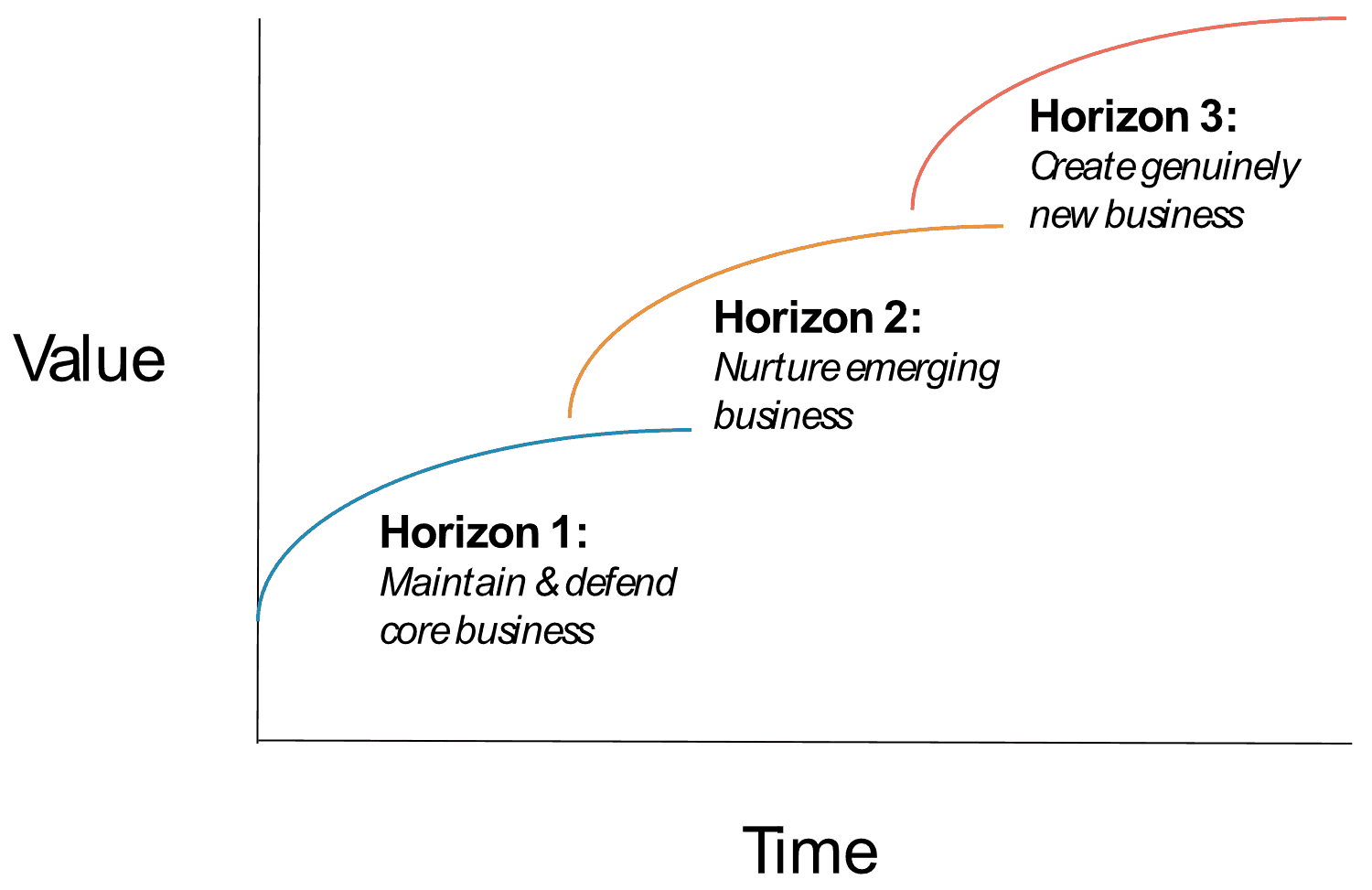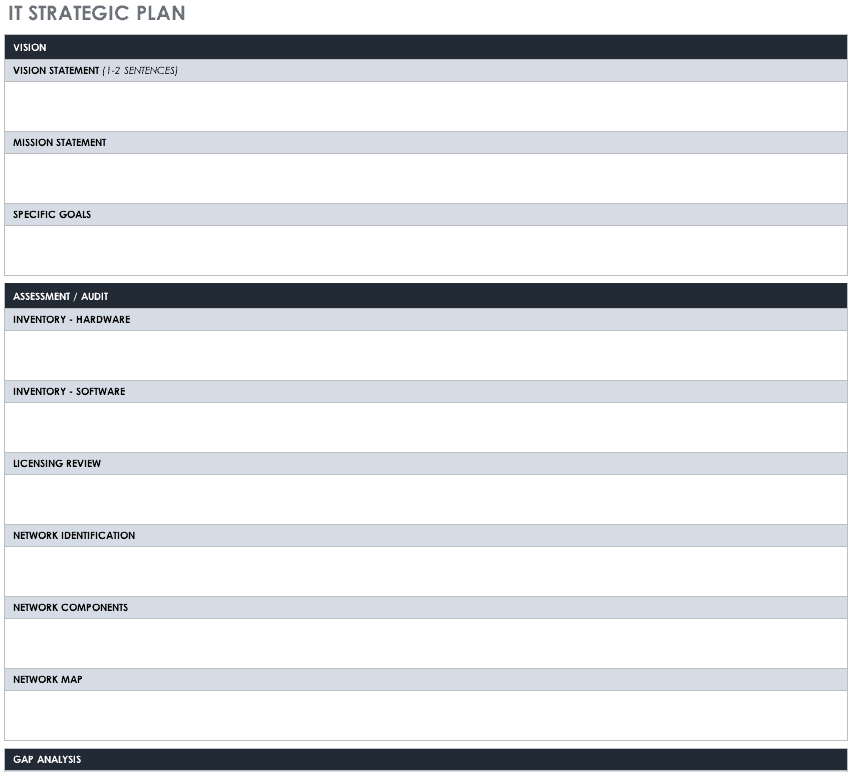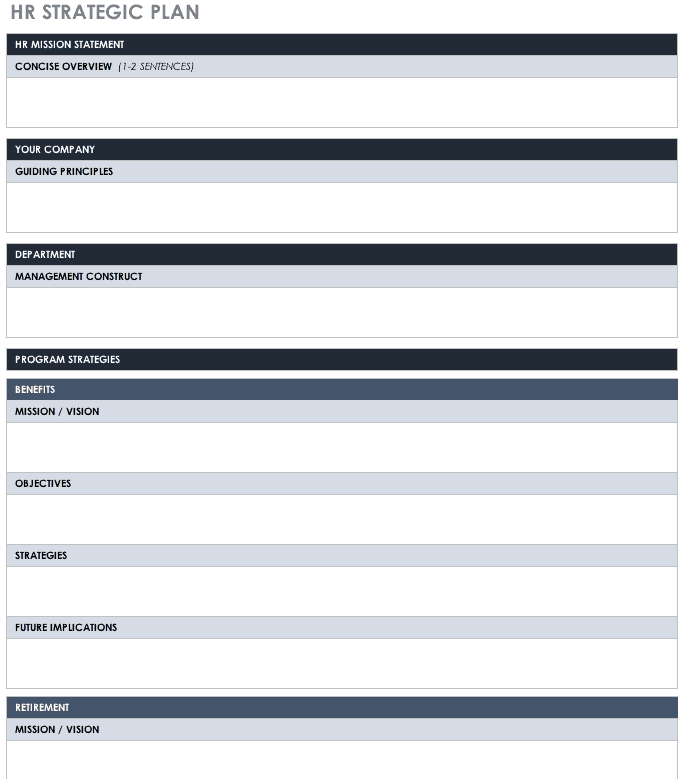Strategic Planning Basics
Strategic planning is a team process that sets up how your company will accomplish its goals. When you deploy it correctly, strategic planning highlights problems, helps find solutions, and monitors progress. To learn more about the basics of strategic planning, read this article.
A strategic plan includes many sections. When done well, a strategic plan can help you prioritize your company’s functions and stay in line with your mission and vision.
There are different ways to present a strategic plan — for example, it can be a written document, a spreadsheet, or an animated presentation. To learn how to write a strategic plan, read this article.
Strategic Planning Frameworks and Models
Just as there are many approaches to presenting a strategic plan, you have several ways to frame or model your plan.
The terms strategic planning framework and strategic framing models are often used interchangeably, but some say they are different.
There are many strategic planning models and frameworks — some are tried and true, others are newer and more adaptive, and planners and managers may be more familiar with some methods than others. There is no one right or wrong way to create a strategic plan, and you can modify models and frameworks based on your company culture, your current situation, and the purpose behind your planning.
“The major driver [for picking a model or framework] is what type of business you are and what you want to accomplish,” Wright explains.
Strategic planners often utilize different frameworks or customize particular models as they move through the planning process. But be careful; customizing models or frameworks too much might confuse people who are familiar with a particular planning process.
Below is a list of some of the most common frameworks and models:
-
Alignment Model: This model helps align your mission statement with available resources. It is particularly effective for businesses facing internal struggles.
-
Balanced Scorecard (BSC): The balanced scorecard system strives to connect big-picture elements with operational elements. BSC is well-known and works for companies of varying sizes.
-
The Basic Model: Sometimes called a simple strategic planning model, the basic model involves creating a mission statement, goals, and strategies.
-
Blue Ocean Strategy: This framework emphasizes new markets and uncontested space.
-
Gap Planning: A strategy gap is the distance between how a company is currently performing and its desired goal. Gap planning is the analysis and evaluation of that difference.
-
Inspirational Model: This is a somewhat quick method of strategic planning that begins by coming up with a highly inspirational vision for the organization and the goals to match.
-
Issue-Based or Goal-Based Model: A step up from the basic model, this model is better for more established businesses. It incorporates SWOT or other types of assessments to determine goals, mission statements, action plans, and other steps.
-
Organic Model: As the name implies, this model does not necessarily follow a set plan, instead evolving and changing as conditions warrant.
-
PEST Model: The PEST (political, economic, social, and technological) approach looks at elements of the external environment, including the forces in its name.
-
Porter’s Five Forces: This model looks at five competitive forces that are present in every industry and helps to determine strengths and weaknesses: competition in the industry, the potential of new entrants into the industry, the power of suppliers, the power of customers, and the threat of substitute products.
-
Real-Time Model: This a fluid process that works best for companies that operate in a rapidly changing environment.
-
Scenario Model: When used in conjunction with other models, the scenario model can help you identify goals, as well as issues around them, by using scenarios that might arise. Some experts say this is more of a technique than a model.
-
Strategy Mapping: This approach helps organizations design and communicate their strategies. Strategy mapping often falls under the umbrella of a BSC, but strategy maps can also stand alone.
-
SWOT Analysis or SWOT Matrix: SWOT (strengths, weaknesses, opportunities, and threats) offers a way to examine both internal and external forces impacting your company.
-
VRIO Framework: This approach looks at the questions of value, rarity, imitability, and organization concerning the competitive potential of a company.
Using Strategic Planning Models
In this section, you’ll learn the specifics of the different strategic planning models and frameworks. Sometimes, models can serve as a visual guide. In contrast, frameworks function as an overlay to a model that helps clarify particular items, such as goals.
The Basic Model
The basic model of strategic planning is the most common and simplistic approach. The basic model works well for companies that are small, do not have much time to plan, don’t need to address many serious issues, or operate in stable external environments. It also works for companies that are new to strategic planning.
The basic model is not meant for organizations with significant resources to pursue ambitious visions and goals.
The basic model centers on the mission and vision statements. The vision statement identifies your company’s purpose on a higher level, and the mission statement outlines what happens within the organization to achieve that vision. It makes sense to build the rest of your plan from these statements.
The next step is to come up with goals you must achieve to live up to your mission and make it a reality, then outline what must happen to achieve those goals. Next, list the specific activities you must implement and who will participate in those activities. Lastly, create a simple monitoring plan to make sure your organization stays on track.
The Issue-Based or Goal-Based Model
The issue- or goal-based model evolves from the basic model and results in a more comprehensive plan. The steps vary.
This approach is dynamic and fluid, and it works well for businesses that want to go deeper into strategic planning but have the following concerns:
-
Limited resources for planning
-
Several issues to address
-
Limited past success reaching ambitious goals
-
No buy-in for the strategic planning process
The issue-based model requires organizations to identify their most important current issues, suggest action plans to address those issues, and include that information in the strategic plan.
The goal-based model often includes the following:
-
A way to monitor and amend the plan
-
Action plans, including objectives, resources, and implementation roles
-
Core values
-
Major issues and goals, along with ways to address them
-
Mission statement
-
SWOT analysis
-
Vision statement
-
Yearly operating plan, including a budget
The Alignment Model
The alignment model focuses on making sure an organization’s actions align with its vision. In the plan, you outline the mission, resources, programs, and support your organization needs to ensure it fulfills its vision.
The alignment model works well for organizations that are trying to figure out what is and isn’t working well, along with what needs adjusting. The process can help identify issues, such as internal inefficiencies and productivity problems. However, some critics of this model say it functions more like an internal development plan than a strategic plan.
The Scenario Model
The scenario model looks at what is happening outside of an organization, including regulatory, demographic, or political forces, to determine how they can impact what is happening inside of a company.
The scenario model works best when used in combination with other models and is more of a technique than a model.
For each change in an external force, discuss how it could impact the future of your organization in the following three ways:
-
A best-case scenario
-
A worst-case scenario
-
A reasonable-case scenario
After looking at the three potential impacts, figure out how to best respond to each. Then pick the most likely scenario and discuss strategies to address it.
The scenario model works well for businesses that need help planning for several potential situations.
The Organic Model
If your company wants to stay away from strict and formal strategic planning, the organic model might be a good fit. As the name implies, the organic model of strategic planning is more of a free-spirited conversation, rather than a set process. It emphasizes the journey over the destination.
The organic model relies on everyone having a shared vision and being willing to openly discuss how to get there using common values. This less systematic model requires patience since it involves constant dialogue and is never really finished.
The organic model works well for organizations where traditional methods feel static and obsolete. If you are looking for a set plan outlining steps to follow, the organic model is not for you.
Storyboarding techniques and open dialogue are often a part of the organic model, and everyone is encouraged to participate openly. The focus is more on learning and less about the method of strategic planning.
Real-Time Strategic Planning
The real-time method of strategic planning is even more fluid than the organic model. It helps articulate an organization’s mission and, sometimes, its vision and values. Real-time strategic planning often involves presenting lists to board members or management for further discussion.
Like the organic model, real-time strategic planning is a continuous process and works best for rapidly changing organizations that might not have the need for set, detailed, or traditional strategic planning.
Inspirational Model
Like the name implies, the inspirational model can be energizing to participants, but also have less of a strategic impact on an organization than other, more formal models.
The process works by gathering people to talk about a highly inspirational vision for the company. Leaders encourage participants to brainstorm exciting and far-reaching goals, then capture the details using powerful and poignant wording.
The inspirational model works well for organizations looking to lift the spirits of a staff or to quickly produce a plan.
Strategic Planning Frameworks
Like models, strategic planning frameworks help an organization through the strategic planning process. Most frameworks cover the basics of strategic planning (mission, vision, goals), but include additional sections and have more specific focus areas.
Balanced Scorecard Framework
One of the more popular strategic planning frameworks is the balanced scorecard. It functions as both a strategic planning and management system, and it helps connect a company’s plan to the operational elements that make it happen. The balanced scorecard takes more than financial profits into account when measuring success.
Companies use the balanced scorecard to do the following:
-
Align the daily work to the longer-term strategy.
-
Communicate where they are doing and why.
-
Set priorities.
-
Monitor progress and measure success.
When Drs. Robert Kaplan and David Norton created the balanced scorecard in the 1990s, it changed the way many companies do their strategic planning because it focused on more than one performance metric.
Companies that use the balanced scorecard try to look at themselves using four unique perspectives to get a better understanding of their planning:
-
Financial performance
-
Stakeholders and customers the company is serving
-
An internal review of how the company is operating
-
Learning and growth (including capacity, infrastructure, technology, and culture)
The key to the balanced scorecard is that a business should be a balance of the four quadrants.
Cascade’s Wright says the balanced scorecard works well for medium and large companies that don’t change very quickly or don’t need to make radical changes.
To learn more about the balanced scorecard and find free templates and examples, read this article.
Strategy Mapping
Strategy mapping can help an organization reach its goals by providing a visual tool to communicate a strategic plan. Strategy mapping is often part of (but is not exclusive to) the balanced scorecard framework.
Because the graphic is visual and simple, it is an easy way to show how one objective impacts others.
Strategy mapping helps you identify key goals and unify those goals into strategies. People can refer back to it in order to stick to the overall plan when working on tasks or making decisions.
The map shows how different items interact with each other in various ways, including a cause-and-effect relationship.
Strategy maps are often set up in the following manner:
-
List the four perspectives (financial, customer, process and learning, and growth) horizontally.
-
Place objectives within those perspectives.
-
Write sets of linked objectives across different perspectives (these are called strategic themes).
-
Show cause-and-effect impacts between objectives and across perspectives.
Image credit: Clearpoint Strategy
Use this template to help you organize your thoughts visually. By thinking of how different perspectives relate to each other, you can come up with your objectives.
Download Strategy Map Template
Porter’s Five Forces
Porter’s Five Forces approach helps companies assess the competitiveness of the market. Introduced in 1979, it is one of the oldest strategic planning frameworks.
This approach focuses on the five forces that can impact the profitability of an organization:
-
The Threat of Entry: Can new companies enter the market?
-
The Threat of Other Substitute Products or Services: Is there a competitor on the market that your customers could use instead of your product or service?
-
Customers’ Bargaining Power: Can customers pressure you to react to their demands?
-
Suppliers’ Bargaining Power: Can suppliers apply pressure to your company?
-
Competitive Rivalry Among Companies: If a rival company changes its strategy, will it impact yours?
The key is to look at the amount of pressure each force applies to a company in order to determine that company’s future.
Download Five Forces Model Template
SWOT Analysis
Most strategic planning processes include a SWOT analysis. Many companies perform a SWOT analysis at the beginning of the strategic planning process, as it offers them a look at what they are doing well and where they can improve.
A SWOT analysis examines the following:
-
Strengths: What the business does well to achieve its objectives
-
Weaknesses: What activities could keep a business from achieving its objectives
-
Opportunities: The external factors that could help achieve its objectives
-
Threats: Possible external factors that could keep the company from achieving its objectives
Strengths and weaknesses are internal characteristics, while opportunities and threats are external.
You've seen how the four quadrants of a SWOT analysis work. Use this template to write down each factor, so you can view your strengths, weaknesses, opportunities, and threats.
Download SWOT Analysis Strategy
Excel | Word | PDF | Smartsheet
PEST/PESTEL Planning
PEST stands for political, economic, sociocultural, and technological factors. There are several variations based on the idea, including PESTEL or PESTLE (when you also consider environmental and legal factors) or STEEPLED, where you consider sociocultural, technological, economic, environmental, political, legal, education, and demographic information.
These frameworks look at an industry or business environment and see what factors could impact an organization’s overall health and well-being. These do not stand alone and often go along with a SWOT analysis and other frameworks.
Below are some possible examples of these factors:
-
Political: Changes in tax laws, trading relationships, grant changes
-
Economic: Interest rate changes, inflation, consumer demand
-
Social: Changing lifestyle trends, demographic shifts
-
Technological: Competing technologies, productivity changes
-
Legal: Changes in regulations, employment laws
-
Environmental: Changes in customer expectations or regulations
Download PEST Analysis Template
Gap Planning
Gap planning allows you to compare an organization’s current position to its goal, then identify ways to bridge that gap. Gap planning can also help you identify internal deficiencies. Gap planning is sometimes known as gap analysis, needs assessment, or a strategic planning gap.
For a more detailed look at gap planning, read this article.
Blue Ocean Strategy
Created by professors W. Chan Kim and Renee Mauborgne in 2005, the blue ocean strategy is a relatively new planning framework. The idea of a blue ocean is to create an uncontested market space for your company. By contrast, a red ocean is a market space that is already developed and saturated.
A blue ocean is the unknown. A company creates demand for a product or service instead of fighting over it, so there is plenty of opportunity for everyone. The idea is to pursue differentiation, thereby creating market share instead of trying to beat competitors.
A red ocean is the known market space. Industries in that space define and accept the boundaries that exist, and they play by the rules. The only way to get ahead is to outperform rivals to claim a bigger share of the market. The competition can be bloody, which leads to the term red ocean.
An example of an organization that found a blue ocean is Cirque du Soleil. Instead of operating as a typical circus, it found and expanded on a niche. The key to the blue ocean strategy is to make the competition irrelevant because you are doing something the others are not.
VRIO Framework
VRIO (value, rarity, imitability, and organization) is a framework that deals primarily with the vision statement, rather than the entire strategy for a company. By answering four main questions, an organization should be able to create a vision statement to take it through the rest of the planning process. This results in a competitive advantage in your marketplace.
Below are the four main questions:
-
Value: Using a particular resource, can you exploit an opportunity or get rid of a threat?
-
Rarity: Is there a lot of competition in your market, or do a few entities control most of the market?
-
Imitability: Can anyone else do what you do?
-
Organization: Are you organized enough as a company to adequately exploit your product or service?
Companies can use the VRIO framework to evaluate its resources and capabilities as part of the overall strategic planning process. VRIO comes into play after a company creates a vision statement, but before the rest of the planning process. The advantages you identify help determine what you need to do in order to achieve them.
McKinsey’s Strategic Horizons
McKinsey’s Strategic Horizons framework focuses on growth and innovation by categorizing goals into three categories: the core business, emerging opportunities, and new business.
Image credit: CASCADE
“McKinsey’s is one of my favorites because it applies to businesses small to large and generates excitement,” says Wright. He adds that it is an easy model because it does not involve much jargon and focuses on the future.
The first horizon deals mostly with core activities in which a company is already engaged. Existing revenue is placed here, so goals mostly deal with improving margins and processes, as well as maintaining incoming cash flow. The second horizon involves taking what is already happening and expanding it into new areas. The third horizon involves new directions, possibly including research and new programs. Wright recommends a 70/20/10 split between the three horizons.
Fast-growing and startup organizations might find McKinsey’s framework helpful.
The Ansoff Matrix
Sometimes called the product-market matrix, the Ansoff matrix looks at market penetration and potential future growth. It helps companies that want to try to grow sales volumes or have it as a major focus area.
In this matrix, market development concerns selling more of an existing product or service to a new group of people. Market penetration focuses on selling even more of a current product or service to the same people. Product development focuses on developing new products for current customers. Diversification is all about new products and services and new markets; this carries the most risk, but potentially offers large gains.
Wright says this framework helps companies think deeply about how they will achieve growth instead of merely saying they want to grow.
The Bryson Model or Strategy Change Cycle
John M. Bryson, McKnight Presidential Professor of Planning and Public Affairs at the Hubert H. Humphrey School of Public Affairs, University of Minnesota and author of Strategic Planning for Public and Nonprofit Organizations: A Guide to Strengthening and Sustaining Organizational Achievement, created the Bryson model. Some people, himself included, call it the Strategy Change Cycle.
There are 10 standard steps in the cycle, but Bryson stresses they are not sequential and often happen simultaneously.
-
Initiate and agree on a strategic planning process
-
Identify organizational mandates
-
Clarify organizational mission and values
-
Assess the external and internal environment to identify strengths, weaknesses, opportunities, and threats (SWOT)
-
Identify the issues facing the organization
-
Formulate strategies to manage the issues
-
Review and adopt the strategies or strategic plan
-
Establish an effective organizational vision
-
Develop an effective implementation process
-
Reassess the strategies and the strategic planning process
Using this cycle, changes to the norm often happen. “You might think you know what your mission and goals are, and after you go through the process, you might need to change your mission and goals,” Bryson explains. “We try to let the mission and goals emerge from the conversations rather than starting there.”
Other Planning Models and Frameworks
In addition to the models and frameworks listed above, there are several other types, including the following:
-
The Stakeholder Theory: This approach focuses on adding value to specific groups of people, including employees, customers, the community, shareholders, and society. Organizations can add groups as necessary since the model is very flexible.
-
Kaufman Model: Also called mega planning, the Kaufman Model relies on a needs assessment. This model focuses on the impact an organization can have on society and clients.
-
Global Model: As the name implies, global strategic planning includes what is necessary to compete in an international marketplace. It involves looking at both the internal and external environments of multinational organizations.
-
Maturity Model: The maturity model assesses how strategic management is working within an organization and how it stands up to other organizations.
-
Diamond-E Framework: The Diamond-E framework helps identify possible gaps in an organization to decide whether or not to pursue an opportunity.
-
Value Migration: This model helps companies plan ahead of the competition. Its creator, Adrian Slywotzky, defines value migration as the shifting of forces that create value, and that shift goes from an outdated business model to a better-designed model that satisfies customers.
-
Value Disciplines: This flexible framework focuses on what an organization is already good at and builds on it. Three areas of focus are operational excellence, customer intimacy, and product leadership.
Image credit: CASCADE
-
Agile Strategic Planning Model: The flexibility of Agile planning allows for growth and change in strategic planning. The cornerstone of Agile is being able to respond quickly to change, which seems like the antithesis of strategic planning. The Agile approach to strategic planning involves reviewing and adapting your strategic plan at regular intervals and whenever conditions warrant it.
-
General Electric Model: Also known as the McKinsey Matrix, this model looks at the industry externally versus the internal forces. Since it helps to identify the attractiveness of an industry and a firm’s strengths, the grid can help evaluate market share and identify areas for development.
How to Decide Which Strategic Planning Model or Framework to Use
Though strategic planning has changed over the years, the need remains for organizations to have some kind of vision and mission, as well as an outline about how to achieve them.
There is no right or wrong way to decide which model or framework to use for your strategic planning process. The key is to figure out which one best applies to your company and its needs — for example, VRIO can help you create a vision statement, and BSC can help keep plans on track. Additionally, some methods work well together.
“The perfect plan is the one that actually gets done,” says Wright. “A poor plan well executed is worth more than a great plan that never gets off the ground. Most people know what they need to do; it’s getting the traction and about democratizing the process. Constantly, people undervalue the role of buy-in with strategic planning. People need to be involved.”
Jackson advises simplifying some frameworks and adapting them, but he has some cautionary advice about trying to combine parts of different frameworks. “One mistake is not picking one framework. You can’t be so flexible that you’re implementing multiple frameworks together. People within an organization get really confused,” Jackson says, adding that people who have some knowledge of specific models or frameworks will not understand different terms and ideas, and they’ll probably be afraid to ask.
Some organizations might not get to choose the framework they use. For example, governmental organizations or companies that receive grant funding might need to produce a strategic plan that fits into a formula the government dictates.
Even though you should not use a strategic plan solely because a similar company does, it might help to look at their preferred framework to pick the one that is right for you.
Below are other criteria to help you decide:
-
Check the size of your organization and the resources you can devote to planning.
-
If your organization is in trouble, you might want to focus on a framework or model that addresses immediate issues rather than tackles the longer term.
-
Look at the health of your organization and its developmental stage.
-
See who is excited about the planning process.
“If you have a cultural challenge in your organization about getting excited about planning, the model you pick is important. Some models are sexier than others,” Wright explains.
Wright does not recommend changing models during the planning process. “[The model] is a template you use to get your ideas on paper. The model is just a vehicle. If you’re struggling with the model, it might be you.”
It isn’t the same for frameworks, according to Wright. “There is a ton of value in changing frameworks and using multiple frameworks at the same time [to view things differently],” he says. Though Wright encourages using different frameworks, he echoes Jackson’s warning to not use different models at the same time.
In certain cases, strategic planning is not an immediate need — for instance, when a company is failing financially or is autocratic, or when a major upheaval is occurring.
Strategic Planning for Specific Areas
Strategic planning for specific departments is a bit different than planning for a company as a whole. In this section, we’ll explain the basics of how some departments typically approach strategic planning.
IT Strategic Planning
A strategic plan for the IT department details how technology will help a company succeed in reaching its goals and objectives. You can think of it as a technology roadmap that outlines where IT can do its part to implement a company’s strategies.
The IT plan must align with the company’s overall mission and vision statements, but it has a secondary mission statement that states how the IT strategy relates to the overall plans for the organization.
The IT plan should also include a SWOT analysis, goals, and objectives. The plan will help make sure you purchase the right assets and work with existing technology effectively. Use the template below to draft a strong, comprehensive IT strategic plan.
Strategic Human Capital Planning
Strategic human capital planning refers to when a company looks at how people — and how to manage them — go along with the organization’s strategic goals. The end result is a plan to help attract and maintain the talent necessary to achieve the company’s mission and vision.
You can use the following HR strategic plan to list, assess, and plan for future program strategies.
Succession Planning
At its core, succession planning relies on developing and identifying new leaders. Because employees move on or retire, a company needs to have a plan in place to assume new and important roles.
Often, succession planning happens as a part of the overarching strategic planning process — for example, when you look at the resources available to a company and their productivity.
Note that available human resources can be both strengths and weaknesses. The planning process can help companies identify specific hiring needs.
For more about human resources management, this article can help. Additionally, you can find templates for succession planning here.
Healthcare Strategic Planning
The world of healthcare is changing, and healthcare organizations have to adapt. Still, the following general ideas persist:
-
There will be a continued need to provide quality patient care.
-
Operating costs and government regulations will impact the bottom line.
-
The volume and demographics of patients will change.
-
There will be a change in the labor supply, especially in the number of primary care physicians available.
-
Wellness and prevention will gain importance.
-
New technologies will continue to emerge.
Even with the ever-changing healthcare industry, strategic plans will continue to help organizations stay focused on their goals and objectives. By having a structured planning process, rather than following models that are more organic and reactionary, healthcare entities can survive and succeed.
But be careful with metrics that only consider financial success — there is much more to healthcare than profit.
Improve Strategic Planning with Real-Time Work Management in Smartsheet
Empower your people to go above and beyond with a flexible platform designed to match the needs of your team — and adapt as those needs change.
The Smartsheet platform makes it easy to plan, capture, manage, and report on work from anywhere, helping your team be more effective and get more done. Report on key metrics and get real-time visibility into work as it happens with roll-up reports, dashboards, and automated workflows built to keep your team connected and informed.
When teams have clarity into the work getting done, there’s no telling how much more they can accomplish in the same amount of time. Try Smartsheet for free, today.

